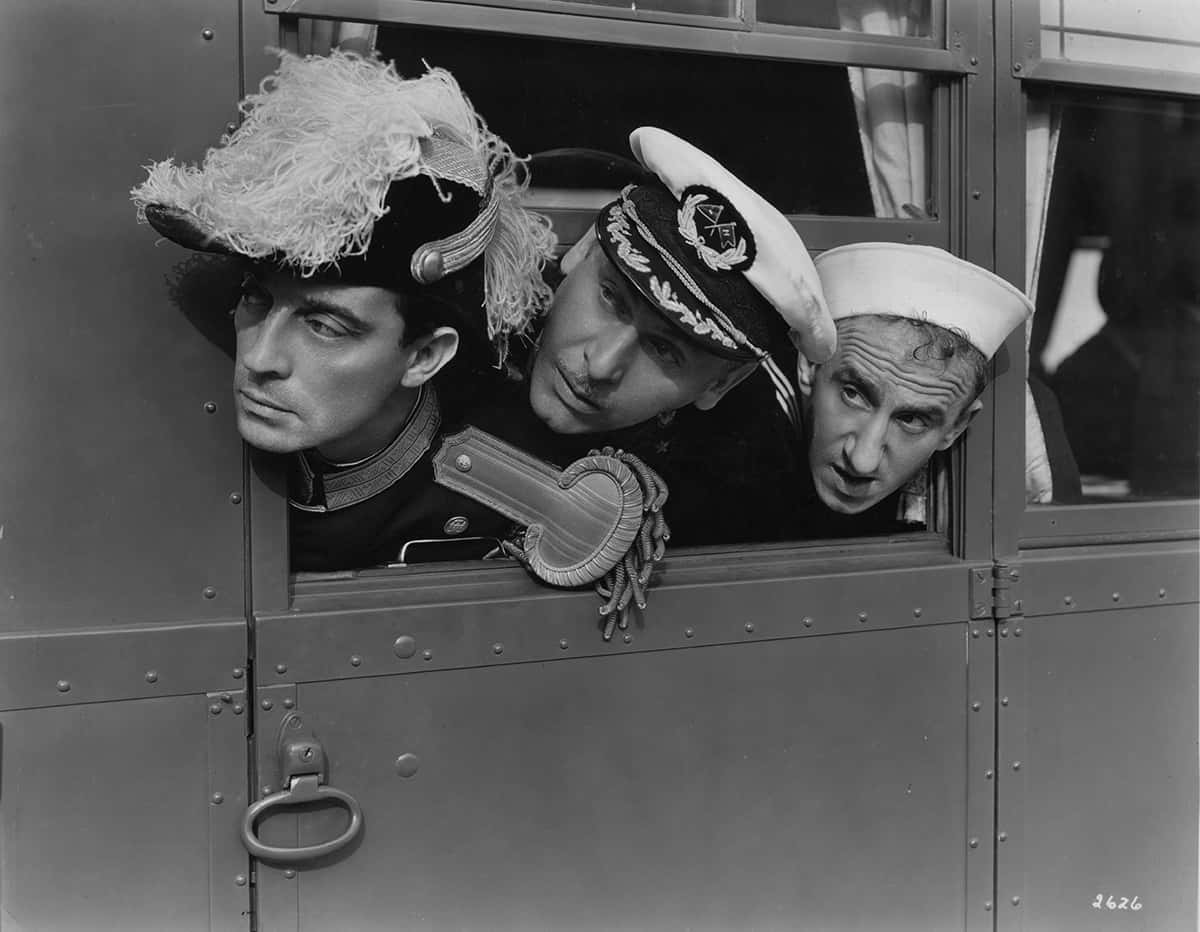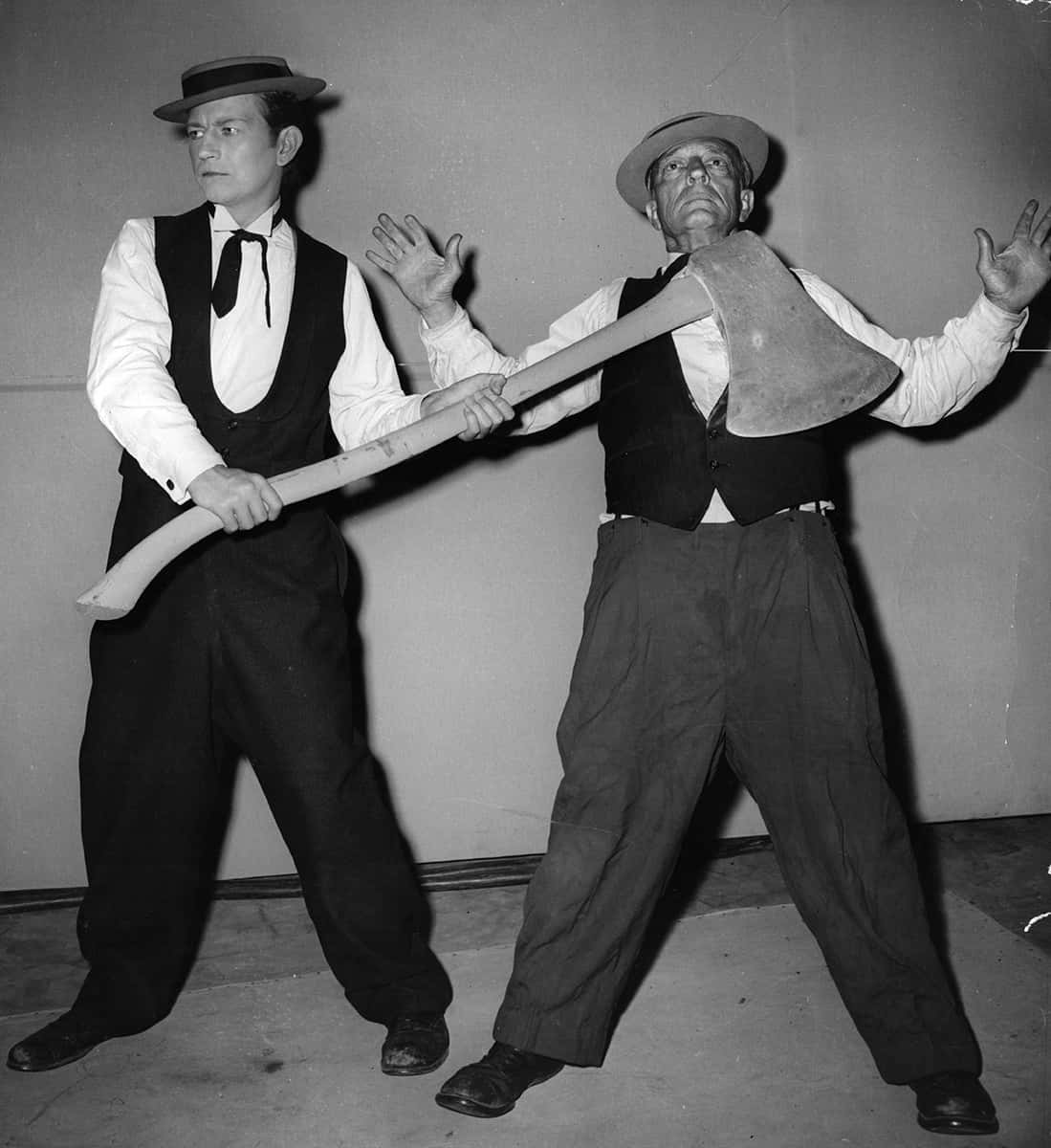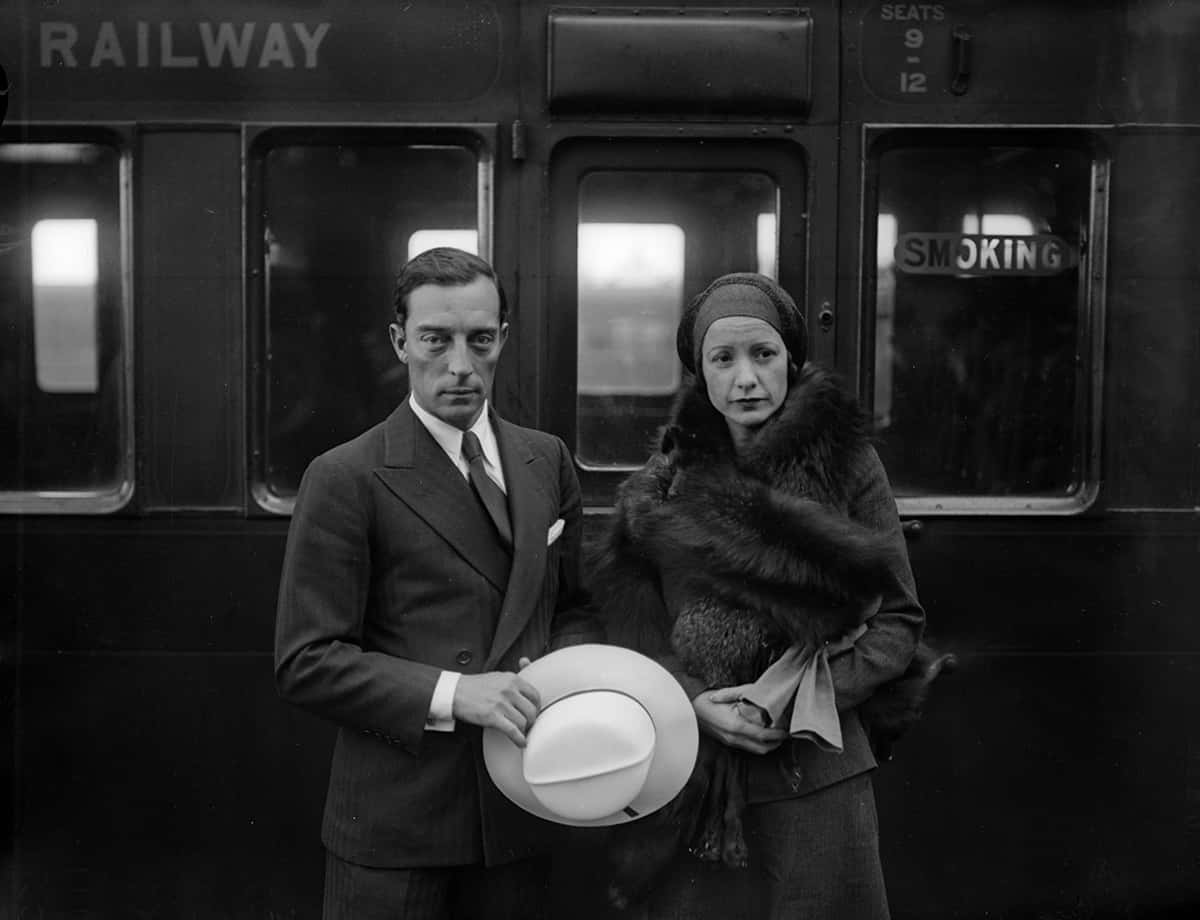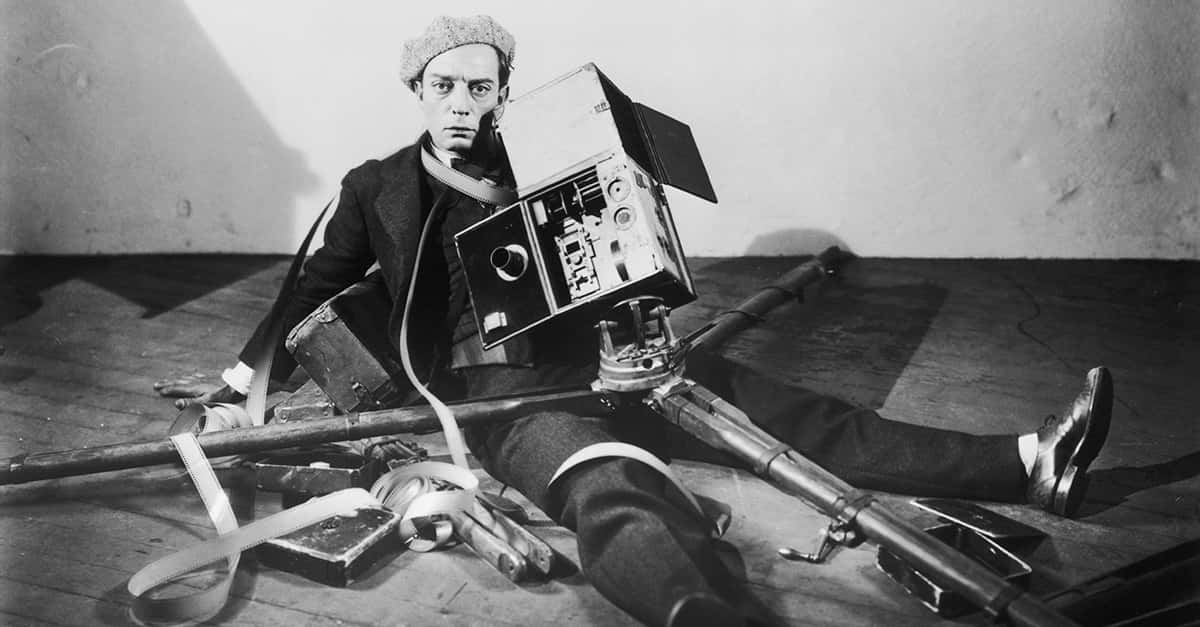Buster Keaton was born to a show-business family before movies even existed. He was raised on the Vaudeville stage, performing pratfalls in a family show with his parents. His acrobatic ability and iconic deadpan expression were perfect for the up-and-coming medium of film. He started as a gagman working for Fatty Arbuckle, but by the 1920s, he had his own film production company, Buster Keaton Productions, and his career really began to take off.
Pushing the Limits
Keaton had been doing wild stunts for several years, but he didn’t ease up once he gained creative control—in fact, his setpieces and pratfalls only got more outrageous. As his popularity grew and he achieved more financial freedom, Keaton decided to really put his body on the line and see just what he could get away in the name of entertainment.
Keaton sat, completely untethered, on the outside of moving trains. He jumped into moving cars and out of second story windows. He dangled off of buildings and soared through the air—all with his trademarked morose expression, as if telling us the world is so completely absurd that even these wild antics don't merit a reaction.
The Real Deal
Forget about CGI, movie-making in Keaton’s day lacked even the most rudimentary safety equipment. So when movie audiences watched a house fall on him, only to see him survive by standing in the exact spot where an empty window-frame landed, they were watching a man who was literally risking life and limb for his art.
Many cinephiles today lament the use of computer imagery over practical effects—and there was nobody as practical as Keaton. Someone without his lifetime of tumbling practice would have been killed a hundred times throughout the man’s filmography, but Keaton made it through each time, and then turned around and tried something even more daring.
That’s probably why his movies, while nearly a century old, still hold up today. Keaton believed that audiences wouldn't be fooled by hackneyed special effects—it had to be real. His films have an unparalleled sense of danger because the man on screen really was in danger. That’s an experience that never really gets old. It can be hard to sit through many films of the silent era today, but Keaton's work still shines.
That’s not to say that the Great Stone Face made it through his film career unscathed. He was good at staying in one piece, but no one could live a life like his and avoid injury completely. The worst likely came on the set of his film Sherlock Jr., when Keaton broke his neck after a massive torrent of water from a water tower was unleashed directly on his head. Yet, in typical Keaton fashion, he didn’t even know the injury occurred, remaining completely unaware for years afterward.
 Getty Images Buster Keaton, Captain Lew Cody and Jimmy Durante
Getty Images Buster Keaton, Captain Lew Cody and Jimmy Durante

Sign up to our newsletter.
History’s most fascinating stories and darkest secrets, delivered to your inbox daily. Making distraction rewarding since 2017.
The Beginning of the End
Keaton’s remarkable streak of films in the 1920s made him a star near the level of Charlie Chaplin. At his peak, he was earning $3,500 a week—enough to build his legendary $300,000 home in Beverly Hills. He was also married for the first time in the 20s. He wed Natalie Talmadge in 1921, and the couple had two sons together. By all accounts, the Jazz Age was a magical time for Keaton—yet few good things last forever. By the end of the decade, Keaton’s life began a serious downturn, and he fell into obscurity and alcoholism.
In a cruel twist of fate, Buster Keaton’s fall from grace began with the best film he ever made. The General, released in 1926, was Keaton’s most ambitious project to date. Set during the Civil War, Keaton used every cent of the film’s (then-unheard of) $750,000 budget, culminating with $42,000 spent on a single shot of an actual train plunging into a river when the bridge it's crossing collapses (no second takes there).
Remember, this was a time when the only way to achieve realism was to film real events. This is what made Keaton’s work so remarkable—but it didn’t come cheap. He kept pushing the envelope further and further, until he bet it all on The General. Unfortunately, audiences didn’t react the way he’d hoped.
In fact, though it’s lauded as one of the greatest films of all time today, The General was an utter disappointment at the box offices. People came in expecting a light-hearted comedy, and evidently, the movie’s dramatic notes were an unwanted distraction. The film bombed spectacularly, and the future of Keaton's career was suddenly up in the air. He was still one of Hollywood’s greatest stars, but producers began to question whether giving him financial and creative freedom was a good idea.
 Getty Images Buster Keaton and Donald O'Connor
Getty Images Buster Keaton and Donald O'Connor
Trouble at Home
The General’s failure was hard on Keaton, and it was made even worse by his personal problems behind-the-scenes. His marriage had been on the rocks since the birth of his second son. He and his wife had begun sleeping in separate bedrooms, and her extravagant spending habits never sat well with him.
Keaton and Talmadge separated in the mid-20s, and after a couple feeble attempts at reconciliation, she left him in 1932, taking most of his fortune with her and refusing to allow him any contact with his sons, whose last names she had legally changed to Talmadge. He wouldn’t see the boys again for a decade.
 Getty Images Buster Keaton with his wife, Natalia Talmadge
Getty Images Buster Keaton with his wife, Natalia Talmadge
Things Fall Apart
Keaton’s home life was already a mess, and The General irreparably harmed his professional life to boot. After the movie’s enormous financial loss, his distributor started insisting that all of Keaton's films have a production manager to monitor every last dime spent. Unsurprisingly, his creative work suffered under this penny-pinching, and as the film-industry moved from the silent era to “talkies,” one of Hollywood’s greatest stars fell into obscurity.
In 1928, Keaton made what he considered to be the worst mistake of his life: he signed with MGM to make a series of sound pictures. The studio took it upon themselves to “improve” upon Keaton’s sense of humor—to update it to the modern era. As one can imagine, they didn't do a good job of it.
Keaton’s MGM movies did fine at the box office but were never anything more than mediocre slapsticks. The man whom Roger Ebert called “the greatest actor-director in the history of the movies” was reduced to producing forgettable fare, and his star grew dimmer than ever before.
The Great Depression
While the 1920s saw Keaton’s meteoric rise to fame, the 1930s saw him crashing back down to earth. His wife had left him, he had no contact with his sons, and he’d lost control of his creative life. Blow after blow took their toll on him, and the usually exuberant and cheerful Keaton became deeply depressed.
Less than two decades earlier, as the movies left his Vaudevillian act obsolete, Keaton's father had fallen into alcoholism. Now here was Buster, the silent-film star who seemingly couldn't adapt to the world of talkies—and he too fell into the drink like his father.
The 30s were the darkest period in Keaton’s life. He was briefly institutionalized—though, in the middle of the harrowing experience, Keaton managed to wow his doctors by escaping from his strait-jacket with tricks learned from Harry Houdini. He might have been down, but Buster Keaton was still Buster Keaton.
By 1934, he was in the middle of yet another failing marriage when he filed for bankruptcy with just $12,000 to his name. The little money he earned was going to the bottle. Things looked grim for the one-time star—but it wasn’t time for Keaton’s curtain call just yet. Soon, a series of remarkable events would see this cinematic legend get the final act that he deserved.
Continued in Part III











